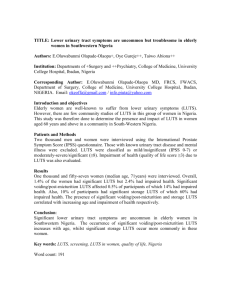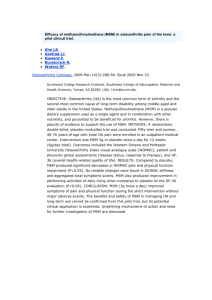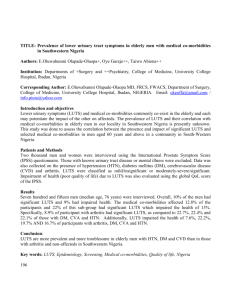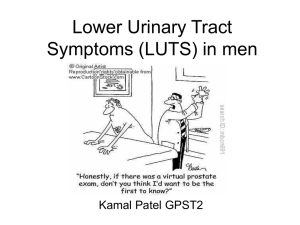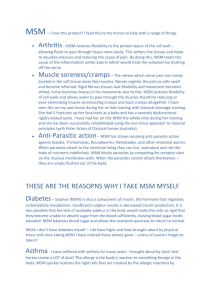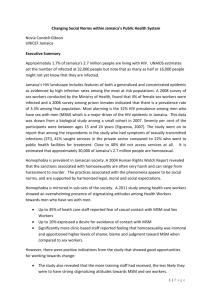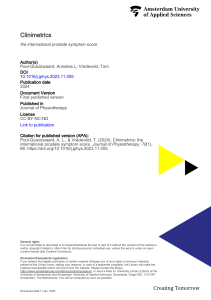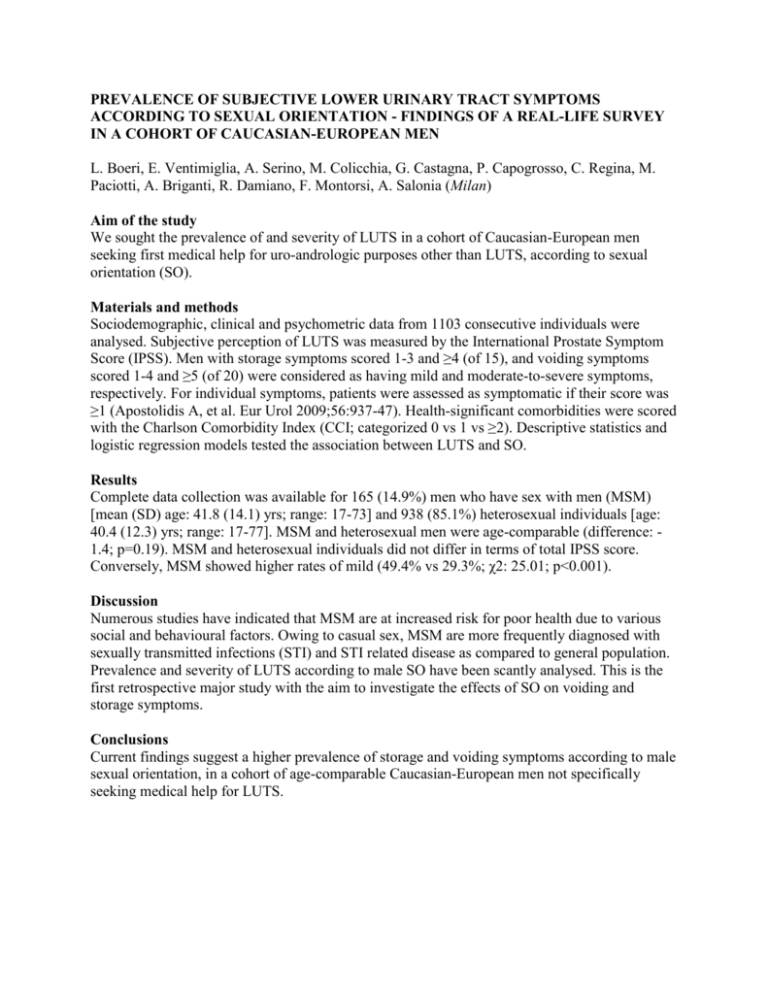
PREVALENCE OF SUBJECTIVE LOWER URINARY TRACT SYMPTOMS
ACCORDING TO SEXUAL ORIENTATION - FINDINGS OF A REAL-LIFE SURVEY
IN A COHORT OF CAUCASIAN-EUROPEAN MEN
L. Boeri, E. Ventimiglia, A. Serino, M. Colicchia, G. Castagna, P. Capogrosso, C. Regina, M.
Paciotti, A. Briganti, R. Damiano, F. Montorsi, A. Salonia (Milan)
Aim of the study
We sought the prevalence of and severity of LUTS in a cohort of Caucasian-European men
seeking first medical help for uro-andrologic purposes other than LUTS, according to sexual
orientation (SO).
Materials and methods
Sociodemographic, clinical and psychometric data from 1103 consecutive individuals were
analysed. Subjective perception of LUTS was measured by the International Prostate Symptom
Score (IPSS). Men with storage symptoms scored 1-3 and ≥4 (of 15), and voiding symptoms
scored 1-4 and ≥5 (of 20) were considered as having mild and moderate-to-severe symptoms,
respectively. For individual symptoms, patients were assessed as symptomatic if their score was
≥1 (Apostolidis A, et al. Eur Urol 2009;56:937-47). Health-significant comorbidities were scored
with the Charlson Comorbidity Index (CCI; categorized 0 vs 1 vs ≥2). Descriptive statistics and
logistic regression models tested the association between LUTS and SO.
Results
Complete data collection was available for 165 (14.9%) men who have sex with men (MSM)
[mean (SD) age: 41.8 (14.1) yrs; range: 17-73] and 938 (85.1%) heterosexual individuals [age:
40.4 (12.3) yrs; range: 17-77]. MSM and heterosexual men were age-comparable (difference: 1.4; p=0.19). MSM and heterosexual individuals did not differ in terms of total IPSS score.
Conversely, MSM showed higher rates of mild (49.4% vs 29.3%; χ2: 25.01; p<0.001).
Discussion
Numerous studies have indicated that MSM are at increased risk for poor health due to various
social and behavioural factors. Owing to casual sex, MSM are more frequently diagnosed with
sexually transmitted infections (STI) and STI related disease as compared to general population.
Prevalence and severity of LUTS according to male SO have been scantly analysed. This is the
first retrospective major study with the aim to investigate the effects of SO on voiding and
storage symptoms.
Conclusions
Current findings suggest a higher prevalence of storage and voiding symptoms according to male
sexual orientation, in a cohort of age-comparable Caucasian-European men not specifically
seeking medical help for LUTS.


